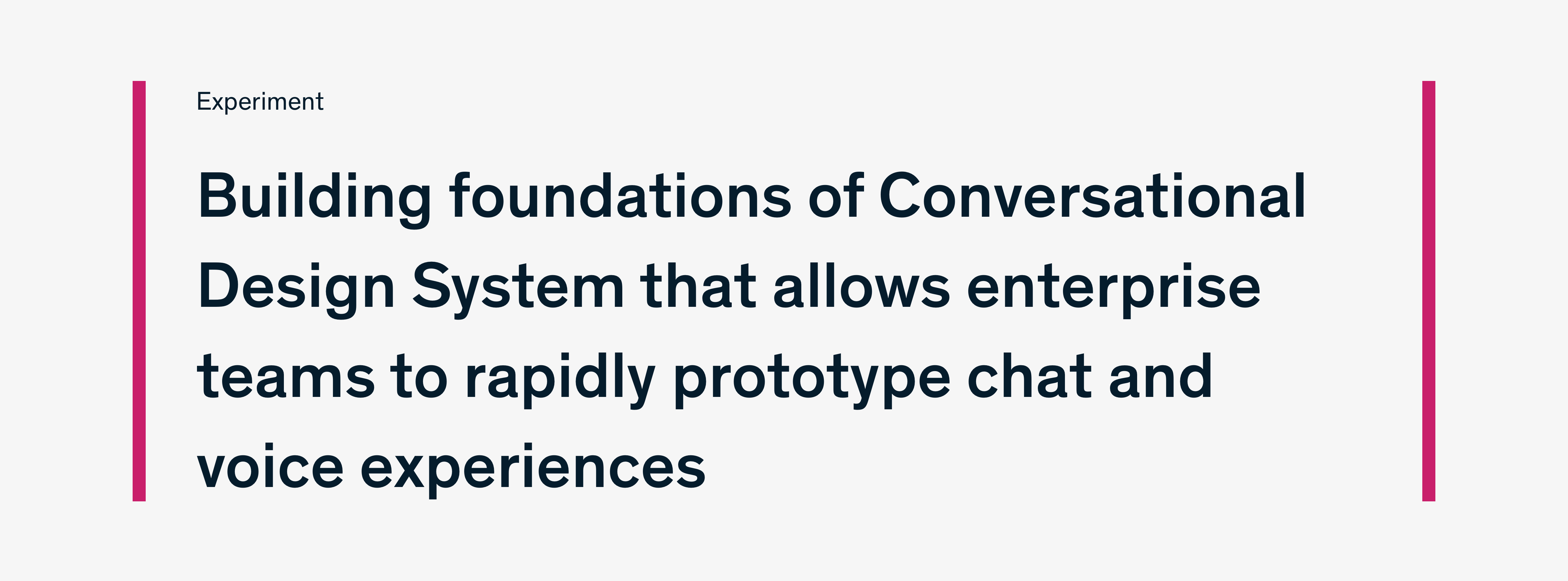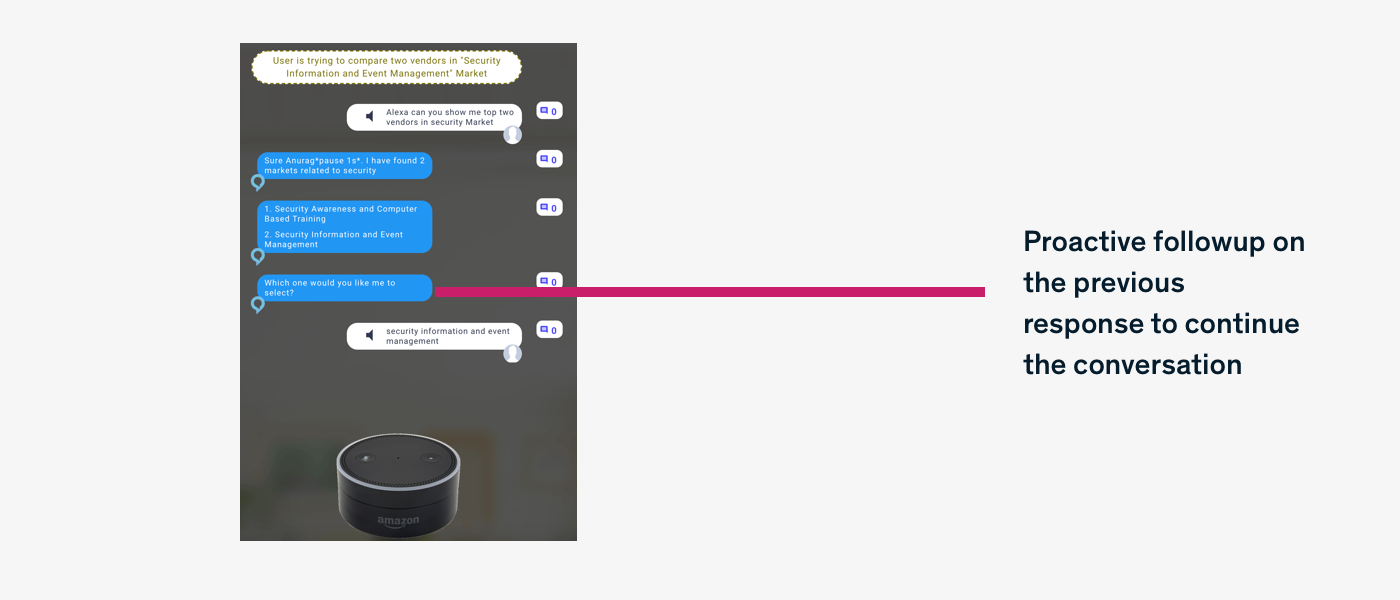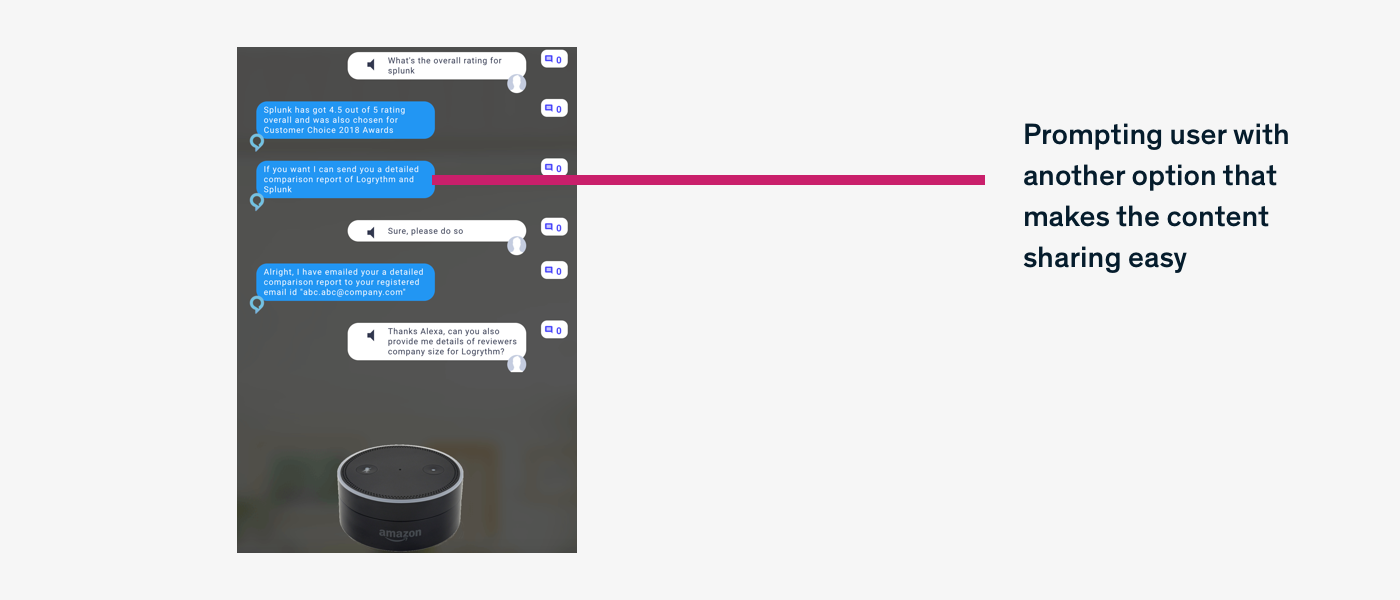

Chatbots are common nowadays, and each one of us has probably interacted with one or the other form of a chatbot so far. Chatbots are part of conversational experiences that also has other mediums like voice. Alexa is probably leading in the voice bot category. This case study explores the use of a voice bot in one of the enterprise product scenarios.
Building a voice experience prototype is not difficult and can be done quickly with existing tools like BotSociety. Tools like BotSociety make it easy for designers to test and iterate different conversation flows in no time, without depending upon any development capacity. As a designer, one should focus more on getting the right user flow and design responses with enough context, so the user remains in full control of the conversation.
Launch DemoGoing by the rule of 20:80, focus on 20% of user flows used for 80% of the time.


It may appear that designing conversations is easy. We converse with each other almost daily; how hard can it be to create a voice bot experience? It turns out that you can design a conversation, but it may not be that impactful without structure.
There is a reason we use the visual library of tried and tested UI components in designing interfaces. One of the reasons is that we want to reuse the patterns that work and not reinvent them every time. Using conversation design patterns can help you focus on core experience rather than worrying about building the basic blocks of conversational experience.
Designing a conversational experience is not difficult. Focus on the 80:20 rule (design for the top 20% of user flows used for 80% of the time). Keep the design cost down by leveraging tools like BotSociety to build rough and ready prototypes. And don't hesitate to discard and start from scratch.